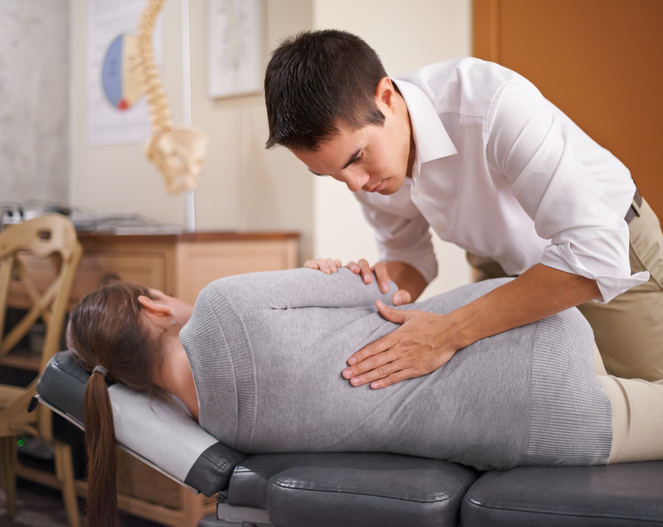

Your gait is your natural, and often unique, movement while walking and running. However, the repetitive nature of the thousands of steps a runner takes, added with the additional load exerted on his or her joints that is created from a running gait, places greater stress on the runner’s joints and back, increasing the potential for injury. If you want to keep running, prevention should be your number one priority. Your plan should not only be tailored around a realistic training schedule and adequate warm-up and stretching, but may also include orthotics and/or chiropractic adjustments to help stabilize your gait and to protect from the most common runner’s injuries.
What are the Most Common Dangers of Running?
While very beneficial, running can be hard on the body. Your foot contains 26 bones, 33 joints and over 100 tendons, muscles, and ligaments; and your knees bear 45% of your weight. So while each stride requires your muscles and joints to handle a force of about ten times that of walking, your body is enduring wear and tear much greater than that of other forms of exercise. This is compounded if you are even 10 pounds overweight. As you run, your body changes position from one of impact, to pushing off and then a period of suspension before impacting again. This type of repetitive motion causes different muscles to develop at different rates. For instance, while your calf muscles overdevelop, the muscles of your shins are not as involved in the motions of running. Ultimately, some areas are more stressed than others, and imbalances can develop.
The most common problems that occur from running include knee pain (inner, outer, and over the kneecap), IT band syndrome resulting in pain in the outer thigh, piriformis syndrome that causes gluteal pain, and low back pain. Because of the need to absorb the impact of repetitive jarring strikes of the foot against the ground, your joints, and especially your knees, will feel the brunt of the work. If you begin to feel pain when bending or moving the knee, hear a grinding or popping sound, or experience swelling, you my have developed a “runner’s knee”. The good news is that there are a number of things, including chiropractic adjustments and the use of orthotics, which can improve your symptoms and help you prevent further injuries.
How Can Chiropractic Adjustments Help?
Chiropractors make manual adjustments to joints, including the joints in the spine, to improve function and movement, as well as to relieve pain. They maneuver the body into position, and then apply pressure to move the joint in the right position. By decreasing pain and improving range of motion of a joint, running becomes more efficient. In competitive running, this can be the difference between winning and losing. While the maneuver might be made on the ankle, knee, or hip, the most common adjustments made by chiropractors are of the spine. When your spine is out of alignment, pressure may be exerted unevenly, resulting in pain and problems in a distant area. For instance, your IT band pain may be coming from a misaligned spine. In this case, adjusting the spine is the only way to improve the leg pain. If the problem goes untreated, running will continue to put undue stress on one side of the body. Thus, a misaligned spine can cause pain in the back, hips, and legs. When the imbalance is corrected, the runner’s gait is improved by proper biomechanics, resulting in a reduction of pain and injury.
If you need an adjustment, you can expect to lie on a table. Your chiropractor will reposition your body, while pressing or pulling to align your joints. You may hear a popping noise during the procedure. Light to moderate exercising immediately after an adjustment can help reinforce the correct biomechanical movement involved in a healthy gait.
How Can Orthotics Help?
Another cause of running injuries is from an imbalanced gait itself. People, whose feet pronate (role inward) while running, create uneven stress on different areas of the body. Initially, this prevents the foot from planting firmly to push off powerfully from the ground, thus resulting in a less efficient stride. Speed and quickness will suffer. Additionally, this imbalanced gait will ultimately place more stress on certain areas of the body, resulting in pain and injury. While a pronated gait causes problems, a neutral gait will result in a more efficient stride, as well as fewer injuries. The use of orthotics can correct this problem while stabilizing your gait.
Orthotics are artificial supports that can be placed in the shoe to create a neutral gait. They will also provide additional shock absorption, thus protecting your joints. A gait examination will help determine if orthotics are right for you. Once you are using them, remember that they won’t last forever. You will need to be evaluated periodically to see if they need to be replaced.
If you are a runner and would like to learn more about how chiropractic adjustments or orthotics can improve your gait and prevent pain or injury, call Delaware Back Pain & Sports Rehabilitation Centers at (302) 529-8783, to make an appointment at any of our seven locations in Delaware, or submit an appointment request form.


